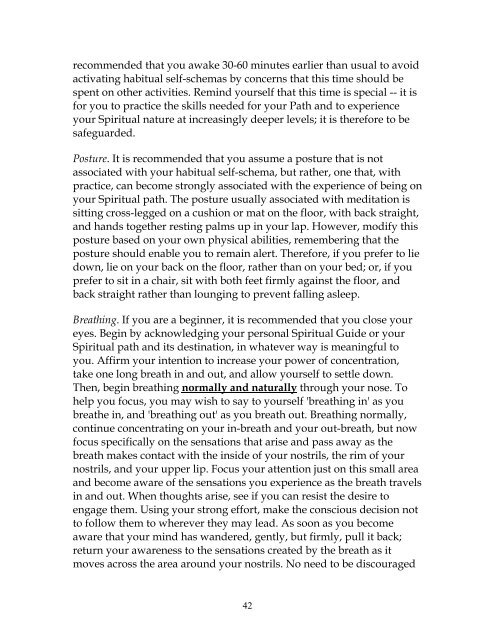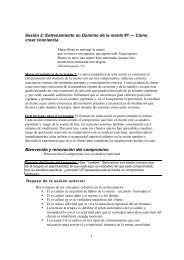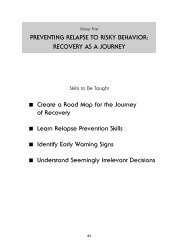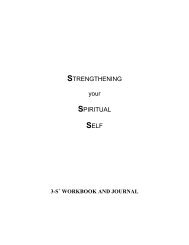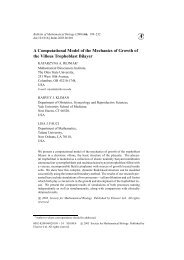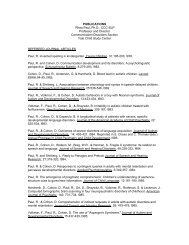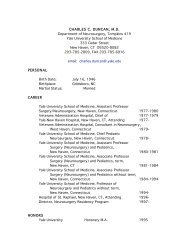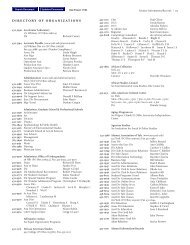The Spiritual Self Schema (3-S) Development Program
The Spiritual Self Schema (3-S) Development Program
The Spiritual Self Schema (3-S) Development Program
Create successful ePaper yourself
Turn your PDF publications into a flip-book with our unique Google optimized e-Paper software.
ecommended that you awake 30-60 minutes earlier than usual to avoid<br />
activating habitual self-schemas by concerns that this time should be<br />
spent on other activities. Remind yourself that this time is special -- it is<br />
for you to practice the skills needed for your Path and to experience<br />
your <strong>Spiritual</strong> nature at increasingly deeper levels; it is therefore to be<br />
safeguarded.<br />
Posture. It is recommended that you assume a posture that is not<br />
associated with your habitual self-schema, but rather, one that, with<br />
practice, can become strongly associated with the experience of being on<br />
your <strong>Spiritual</strong> path. <strong>The</strong> posture usually associated with meditation is<br />
sitting cross-legged on a cushion or mat on the floor, with back straight,<br />
and hands together resting palms up in your lap. However, modify this<br />
posture based on your own physical abilities, remembering that the<br />
posture should enable you to remain alert. <strong>The</strong>refore, if you prefer to lie<br />
down, lie on your back on the floor, rather than on your bed; or, if you<br />
prefer to sit in a chair, sit with both feet firmly against the floor, and<br />
back straight rather than lounging to prevent falling asleep.<br />
Breathing. If you are a beginner, it is recommended that you close your<br />
eyes. Begin by acknowledging your personal <strong>Spiritual</strong> Guide or your<br />
<strong>Spiritual</strong> path and its destination, in whatever way is meaningful to<br />
you. Affirm your intention to increase your power of concentration,<br />
take one long breath in and out, and allow yourself to settle down.<br />
<strong>The</strong>n, begin breathing normally and naturally through your nose. To<br />
help you focus, you may wish to say to yourself 'breathing in' as you<br />
breathe in, and 'breathing out' as you breath out. Breathing normally,<br />
continue concentrating on your in-breath and your out-breath, but now<br />
focus specifically on the sensations that arise and pass away as the<br />
breath makes contact with the inside of your nostrils, the rim of your<br />
nostrils, and your upper lip. Focus your attention just on this small area<br />
and become aware of the sensations you experience as the breath travels<br />
in and out. When thoughts arise, see if you can resist the desire to<br />
engage them. Using your strong effort, make the conscious decision not<br />
to follow them to wherever they may lead. As soon as you become<br />
aware that your mind has wandered, gently, but firmly, pull it back;<br />
return your awareness to the sensations created by the breath as it<br />
moves across the area around your nostrils. No need to be discouraged<br />
42


